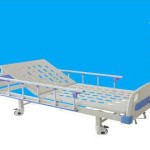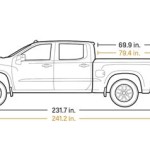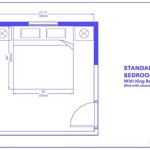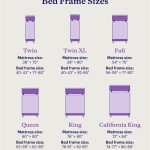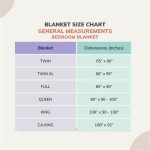Drive Hospital Bed Mattress Size: A Comprehensive Guide
Understanding the dimensions of a Drive hospital bed mattress is crucial for ensuring patient comfort, safety, and optimal use of healthcare equipment. Drive Medical is a leading manufacturer of hospital beds and related accessories, and their mattresses are designed to meet specific standards and requirements. This article will provide a detailed overview of Drive hospital bed mattress sizes, focusing on standard dimensions, factors to consider when choosing a mattress size, and relevant considerations for different patient needs and healthcare settings.
Drive hospital bed mattresses are typically designed to fit standard hospital bed frames, which simplifies the process of finding a compatible mattress. However, variations can occur, and ensuring proper fit is essential to prevent gaps, instability, and potential hazards. Accurate measurements and a clear understanding of mattress specifications are therefore paramount.
The dimensions of a hospital bed mattress directly influence patient comfort and support. A correctly sized mattress will provide adequate surface area for the patient to lie comfortably, reducing the risk of pressure sores and promoting restful sleep. Furthermore, the size of the mattress can affect the effectiveness of adjustable bed features, such as head and foot elevation.
Standard Dimensions of Drive Hospital Bed Mattresses
The most common size for a Drive hospital bed mattress is 36 inches wide by 80 inches long. This is considered the standard size for a single hospital bed and is generally suitable for most adult patients. The thickness of the mattress can vary, but common thicknesses range from 5 to 8 inches. This standard size is designed to accommodate a wide range of patient sizes and weights while fitting securely on the standard hospital bed frame.
While the 36x80 inch mattress is the most prevalent, variations do exist to address specific patient needs. Bariatric patients, for example, require wider mattresses to ensure adequate support and comfort. These mattresses can range from 39 to 48 inches in width, providing a larger surface area to accommodate a higher weight capacity. Length can also vary slightly, particularly in extra-long options designed for taller individuals.
It is important to note that these are nominal dimensions, and slight variations can occur due to manufacturing tolerances. Always refer to the manufacturer's specifications for precise measurements. These specifications are typically available on the product packaging or online through the manufacturer's website.
The thickness of the mattress is another important dimension to consider. Thicker mattresses generally offer greater pressure redistribution and comfort, which is especially beneficial for patients who are at risk of developing pressure ulcers or who spend extended periods in bed. However, thicker mattresses may also make it more difficult for patients to transfer in and out of bed, so this factor must be weighed against the patient's mobility and functional abilities.
Factors to Consider When Choosing a Mattress Size
Selecting the appropriate mattress size involves careful consideration of several factors related to the patient's specific needs and the environment in which the bed will be used. These factors include patient size and weight, the patient's risk factors for pressure ulcers, the patient's mobility, and the specific features of the hospital bed frame.
Patient Size and Weight: Patient size and weight are primary determinants of the appropriate mattress size. Overweight or obese patients require wider mattresses to provide adequate support and prevent them from rolling off the bed. Taller patients may need extra-long mattresses to ensure that their feet do not hang off the end of the bed, which can lead to discomfort and circulatory problems.
Pressure Ulcer Risk: Patients who are at high risk of developing pressure ulcers require mattresses that provide optimal pressure redistribution. Thicker mattresses with specialized foam or air surfaces are often recommended for these patients. The size of the mattress should also be considered in relation to the patient's weight, as a larger patient will exert more pressure on the mattress surface.
Patient Mobility: The patient's mobility level is an important consideration. Patients who are able to move independently in bed may benefit from a slightly smaller mattress, which can make it easier for them to reposition themselves. However, patients who have limited mobility require a larger mattress to prevent them from sliding off the edge of the bed and to provide adequate support during transfers.
Hospital Bed Frame Compatibility: Ensuring compatibility between the mattress and the hospital bed frame is essential. The mattress should fit snugly within the frame to prevent gaps or instability. The manufacturer's specifications for both the mattress and the bed frame should be carefully reviewed to ensure proper fit. Also, the weight capacity of the bed frame should be greater than that of the intended patient for safety.
Furthermore, when choosing a mattress, one must consider the environment in where the bed is located. This would include the available space in the room, ensuring there is enough room for caregivers to maneuver around the bed, and the bed's proximity to doorways or other obstacles.
Specialized Considerations for Different Patient Needs
Different patient populations have unique needs that require specialized mattress features and sizes. Bariatric patients, pediatric patients, and patients with specific medical conditions may require mattresses with different dimensions and characteristics.
Bariatric Mattresses: Bariatric mattresses are designed for patients who weigh over 300 pounds. These mattresses are typically wider than standard mattresses, ranging from 39 to 48 inches, and are constructed with high-density foam or air surfaces to provide adequate support and pressure redistribution. They often have a higher weight capacity and are designed to withstand the increased stress of supporting a heavier patient. The dimensions of the bariatric mattress must be carefully matched to the bariatric bed frame to ensure a secure and stable fit.
Pediatric Mattresses: Pediatric mattresses are designed for children and infants. These mattresses are smaller than standard adult mattresses and are typically made with softer materials to provide comfort and support for young patients. The dimensions of pediatric mattresses vary depending on the age and size of the child. It is important to choose a mattress that fits the pediatric bed frame properly and meets all relevant safety standards.
Pressure Redistribution Mattresses: Pressure redistribution mattresses are designed to prevent and treat pressure ulcers. These mattresses are made with specialized materials, such as memory foam, gel, or air, that distribute pressure evenly across the patient's body. The dimensions of pressure redistribution mattresses are typically the same as standard hospital bed mattresses, but their superior pressure-relieving properties make them especially beneficial for patients who are at high risk of developing pressure ulcers.
In addition to these specialized mattress types, there are also mattresses designed for specific medical conditions, such as spinal cord injuries or respiratory problems. These mattresses may have features such as adjustable firmness or integrated support systems to meet the unique needs of these patients. Understanding the dimensions and features of these specialized mattresses is essential for providing optimal care.
The durability and longevity of the mattress are also important considerations. Hospital mattresses are subjected to frequent use and require regular cleaning and disinfection. Choosing a mattress that is made with high-quality materials and is designed to withstand the rigors of a healthcare environment is essential for ensuring long-term performance. Proper maintenance and care can extend the life of the mattress and help to prevent the spread of infection.

Drive Medical Ultra Light Semi Electric Bed Spinlife
Drive Medical Therapeutic 5 Zone Support Mattress

Drive Medical 14029 Med Aire Low Air Loss Alternating Pressure Mattress Replacement System

Drive Medical Bariatric Bed Comfort Supply Lift Chairs Cpap S Scooters Hospital Beds More

Delta Pro Standard Full Electric Homecare Bed

Drive Med Aire Low Air Loss Mattress W Alternating Pressure

Drive Full Electric Bed Wheelchair Works

Delta Ultra Light 1000 Electric Hospital Bed W Half Rails Mattress Med
Lal Mattress With Alternating Pressure System By Drive Medical

Delta Ultra Light Full Electric Low Hospital Bed With Half Rails And I In Motion Services

